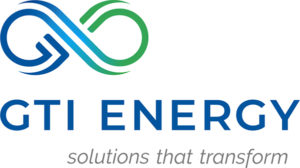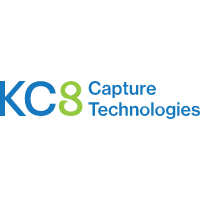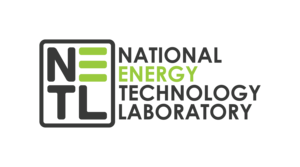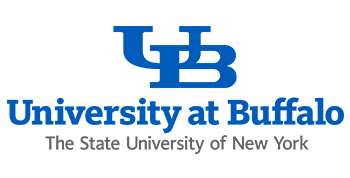
Carbon America FrostCC Process
Carbon America is developing the FrostCC cryogenic process to remove CO₂ from industrial flue gases. The process is designed to compress and expand the flue gas stream with recuperative heat integration, frosting the CO₂ and other pollutants out of the emitted gas. The project is being demonstrated at pilot-scale over several test campaigns at the National Carbon Capture Center.

Cormetech Monolithic Sorbent Module
With DOE funding, Cormetech is pursuing a technology for point-source CO2 capture. The process uses a monolithic amine contactor for CO2 capture followed by steam-mediated thermal desorption and CO2 collection. Key to enhancing scalability to large natural gas combined-cycle power plants is the focus on lower-cost scaling approaches. Cormetech will demonstrate the technology at bench-scale using the National Carbon Capture Center’s natural gas testing system.

Electric Power Research Institute (EPRI) Water-lean Solvent
In collaboration with the Pacific Northwest National Laboratory and RTI, EPRI is working to test a water-lean solvent expected to operate with lower energy requirements and better resistance to degradation than current benchmark solvents. With DOE funding, testing at the National Carbon Capture Center’s Pilot Solvent Test Unit will test the solvent with both natural gas-derived and coal-derived flue gas to support further scale-up.

GTI Energy Membrane Contactor
GTI Energy’s hollow fiber membrane contactor technology combines features of both absorption and membrane processes to provide a cost-effective solution for CO2 capture from flue gases. After bench-scale testing at another location, GTI is advancing the technology with a DOE-sponsored, pilot-scale, 0.5-megawatt process installed at the National Carbon Capture Center. The project team includes GTI, Air Liquide Advanced Separations and Trimeric Corporation.
GTI Energy ROTA-CAP™ Solvent Process
GTI Energy’s DOE-sponsored project features the ROTA-CAP™ process that uses rotating packed bed gas-liquid contacting devices to replace conventional packed bed columns for CO₂ absorption and regeneration, a process designed to provide a significant reduction in equipment footprint. The process developed by GTI and Carbon Clean also uses an advanced solvent from Carbon Clean that was previously tested at the National Carbon Capture Center’s Pilot Solvent Test Unit (PSTU); the next phase is occurring in a ROTA-CAP™ skid installed in the center’s bench-scale area.

Helios-NRG Membrane
Helios-NRG is collaborating with the University at Buffalo to develop thin-film composite membrane technology using CO₂-philic block copolymers with intrinsic microporosity for post-combustion CO₂ capture. The current efforts are to scale up membrane fabrication, advance performance further and validate resistance to flue gas contaminates through long-term testing at the NCCC with flue gas.

KC8 Capture Technologies UNO MK 3 (UNOGAS)
UNO MK 3 is a novel solvent absorption process using a catalytically enhanced precipitating solvent technology engineered to capture 95+ percent of CO2 emissions from heavy industry sources such as cement plants and existing and new-build power stations. Due to its robust nature, the process has been particularly successful in high-oxygen flue gases typical of natural gas combined-cycle generators. Funded through the ARPA-E Phase 2 FLExible Carbon Capture and Storage (FLECCS) program, the UNOGAS project is a 5 – 10 tonnes-per-day demonstration of the UNO MK 3 process on natural gas combustion emissions, which also showcases the technologies ability to time-shift regeneration.

Lawrence Livermore National Laboratory (LLNL) 3-D Packing
LLNL will evaluate their advanced, structured packing technology, based on 3D-printed triply periodic minimal surfaces, for solvent-based CO2 capture at the NCCC. Using the NCCC’s Slipstream Solvent Test Unit, LLNL will validate the solvent-agnostic mass transfer enhancements of their advanced packing at a scale two orders of magnitude greater than prior work.

National Energy Technology Laboratory (NETL) Fiber Optic Sensors
NETL is developing multiple optical fiber sensor technologies for online monitoring of solvent degradation in the liquid phase and CO₂ concentration in flue gas. NETL plans to test their sensor technology using monoethanolamine solvent in the NCCC’s Slipstream Solvent Test Unit.
NETL Membrane Materials
NETL aims to reduce the cost of post-combustion CO2 capture by creating transformational membrane materials that are highly permeable and selective for CO2. NETL developed an automated bench-scale test skid at the National Carbon Capture Center to support the evaluation of novel materials at Technology Readiness Level 3 or 4. The skid can house flat sheet or hollow fiber membrane materials, and the small area required makes it uniquely accessible for developing materials.

SRI International Mixed Salt Process
The SRI mixed salt process (MSP) is a post-combustion CO2 capture process that uses a novel solvent formulation based on readily available potassium and ammonium salts. MSP is tolerant to oxygen, high temperatures and flue gas impurities. SRI received support from the Office of Fossil Energy and Carbon Management and National Energy Technology Laboratory in developing MSP technology. SRI plans to begin testing a 0.5-megawatt MSP CO2 capture technology in the National Carbon Capture Center pilot bay area in 2024.

SUNY Buffalo Bench-scale Sorbent
This future project will demonstrate a sorbent having a molecular layer coating that is tailor-made to be size-sieving. The process will use pressure swing adsorption for CO2 capture. The project team includes RPI/SUNY Buffalo, GTI Energy, Trimeric Corporation and the University of South Carolina.
SUNY Buffalo Bench-scale Membrane
SUNY Buffalo, along with a team that includes RPI, MTR, Caltech and Trimeric Corporation, is developing novel metal-organic, polyhedral-based membranes with high permeance and selectivity and with ease of manufacturing. These membranes will demonstrate their performance at NCCC in the LSTU in the future.

University of Texas at Austin (UT-Austin) PZASTM Process
UT-Austin is continuing development of the PZAS process, a solvent-based technology that uses aqueous piperazine with an advanced flash stripper. UT-Austin has completed two successful test campaigns of PZAS at the National Carbon Capture Center. An upcoming campaign, which is being supported by DOE, EU LAUNCH and private companies, will use natural gas flue gas to study solvent oxidation.

